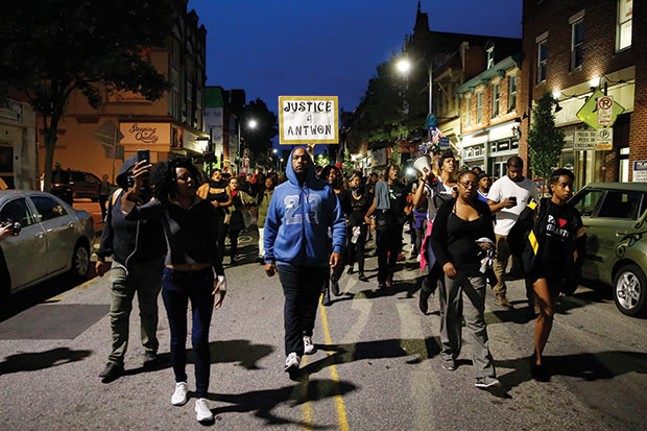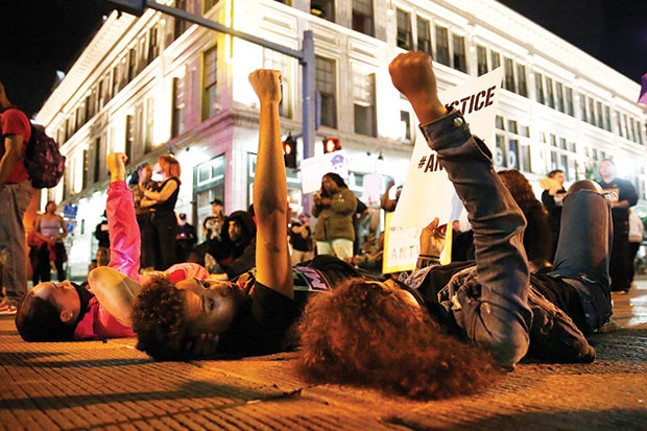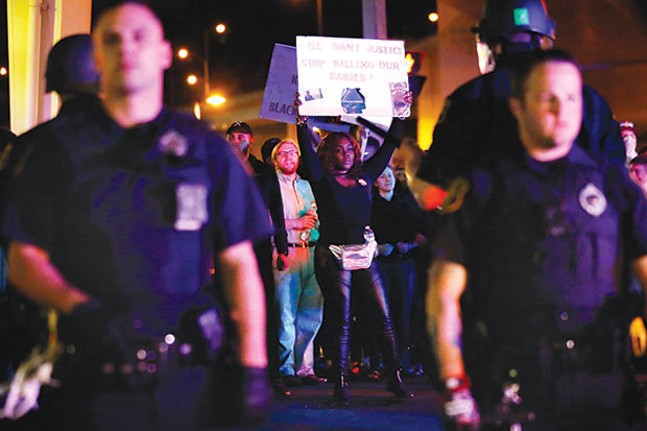If you live in Wilkinsburg, you probably say you’re from Pittsburgh. If you live in McKees Rocks, you probably say you’re from Pittsburgh. If you live in Rankin, you probably say you’re from Pittsburgh.
Antwon Rose Jr., only 17 when he was shot and killed by East Pittsburgh police, lived in Rankin. But he was from Pittsburgh.
Ask anyone who marched in his honor in and around Pittsburgh for four consecutive days after Rose’s death on June 19.
Rose volunteered at the Free Store in neighboring Braddock. Across the river, he worked with the mayor in Duquesne Borough. He earned a paycheck at Domino’s Pizza in Forest Hills. He cared for Pittsburgh, the city and its region, regardless of the municipalities that surrounded his home.
When it comes to policies, municipal boundaries make for big differences. Consider as evidence Pittsburgh Mayor Bill Peduto’s initial response to a video of Rose’s killing.
Social-justice activist Shaun King tweeted a video of the shooting taken by an East Pittsburgh resident. King wrote that he had spoken to people from the “East Pittsburgh area.”
Peduto, unsolicited, took to his Twitter account and repeatedly called attention to the difference between East Pittsburgh and Pittsburgh.
“It wasn’t in Pittsburgh,” Peduto said in his tweet. “It was in the suburbs of East Pittsburgh. Not part of the city. Not Pittsburgh Police. Not Pittsburgh. Please clarify.”
Clarification didn’t change the fact that Rose was dead. Nobody will ever know what contributions he might have made to Pittsburgh, East Pittsburgh, Allegheny County or, well, the world.
STARTING IN FORMER POLICE chief Cameron McLay's tenure from 2014 to 2016, the Pittsburgh Police department underwent significant changes — including implicit-bias training and a focus on improving community-police relations, particularly in low-income and minority communities. It’s unclear if any of the more than 100 smaller police departments in Allegheny County have instituted such reforms.
And, anyway, it’s all too much to fit into a single tweet.
Many of Peduto’s social-media followers felt his tweet was insensitive. A Twitter user captured its shortcomings fairly well: “City resident here, Mayor,” tweeted user @Chageriksen. “I’m very concerned about police shooting teenagers in the back, regardless of whether it occurred in the city or a nearby municipality. This is insanely tone deaf.”
Peduto later apologized for the tweet. However, its sentiment was clear: Pittsburghers, whether they live in the city or in Swissvale or in Sharpsburg, feel towns in the region should have some similar policies, at least when it comes to policing. Even Peduto acknowledged this line of thought.
“One issue that all of us in Allegheny County need to address is having 100+ police departments in one county,” he tweeted on June 23. “The need for merging & mutual training is needed.”
For now, though, Allegheny County is a fractured remnant of its past.
WHEN ITS POPULATION spiked during the Industrial Revolution, hundreds of small municipalities made sense. Residents worked at a factory, shopped at a grocer, patronized a bank, gathered at a bar — all in the same town. The county’s great expansion preceded proliferation of the automobile; compact towns with their own small governments were beneficial.
That was then.
Now, many of those compact towns are losing population and most Pittsburghers are moving to trendy urban neighborhoods or newly developed suburbs on the county’s outskirts. Coincidentally or not, local governments in those sprawling townships are less rigorous than ones in the declining boroughs. There are no mayors of Ohio and McCandless townships, and the Northern Regional Police Department covers Marshall, Pine, Richland and Bradford Woods.
With quality school districts, chain restaurants, and newly constructed homes mostly unavailable to urban communities comprised of low-income residents, these spots are destination areas for people who probably identify as Pittsburghers.
While some Pittsburghers are intentionally moving to the suburbs, many low-income minorities are being pushed to older, compact boroughs. From 2010-2016, Pittsburgh city proper lost more than 5,300 black residents. Meanwhile, Bellevue added 464 black residents, and Rankin 300, over the same span.
Migration can be aspirational in nature. (Suburban life has its benefits.) But often it is forced.
Rents are rising faster in city neighborhoods than in boroughs such as Bellevue, Rankin and East Pittsburgh. People live where they can afford, and Pittsburgh's black population can afford less and less.
A Brookings study compiling data from 2010-2015 reported the median wage of whites in the Pittsburgh region increased by 8.1 percent, well above the U.S. average. Blacks in the region saw their median wages drop by 19.6 percent, well below the U.S. average.
Combine those statistics with studies that show how black people are more likely to be shot and killed by police, and it’s neither outlandish nor out-of-bounds to suggest the Rankins and East Pittsburghs of this region will be where more incidents similar to Rose’s killing occur.
POLICE REFORM IS POSSIBLE. But it costs money and political will — scarcities in distressed municipalities.
Peduto suggested collaboration and consolidation as potential solutions. Those are tricky. Voters in towns seeking to merge must support consolidation through ballot initiatives. There has been little appetite for this in Allegheny County through the years.
Still, political will may be growing organically in response to Rose’s killing.
Registering voters and calls for increased political involvement in non-presidential elections were hallmarks of the protests that followed. The most vocal advocates focused on removing Allegheny County district attorney Stephen Zappala when he is up for re-election in 2019.
What if this energy was channeled into municipal elections?
Electing mayors and councilors pledging to reform police departments could help prevent future killings of kids like Rose. In Pennsylvania, borough mayors and councils wield authority over their police departments.
But living within those borough boundaries isn’t required to get involved. More overall attention to small borough mayors and councils could pressure them to enact police reforms, like those at the Pittsburgh city police department.
After all, a 17-year-old boy was fatally shot by police last week. Antwon Rose Jr. lived outside of the city limits. He volunteered and worked outside of his home borough. But, his death was a Pittsburgh tragedy.




